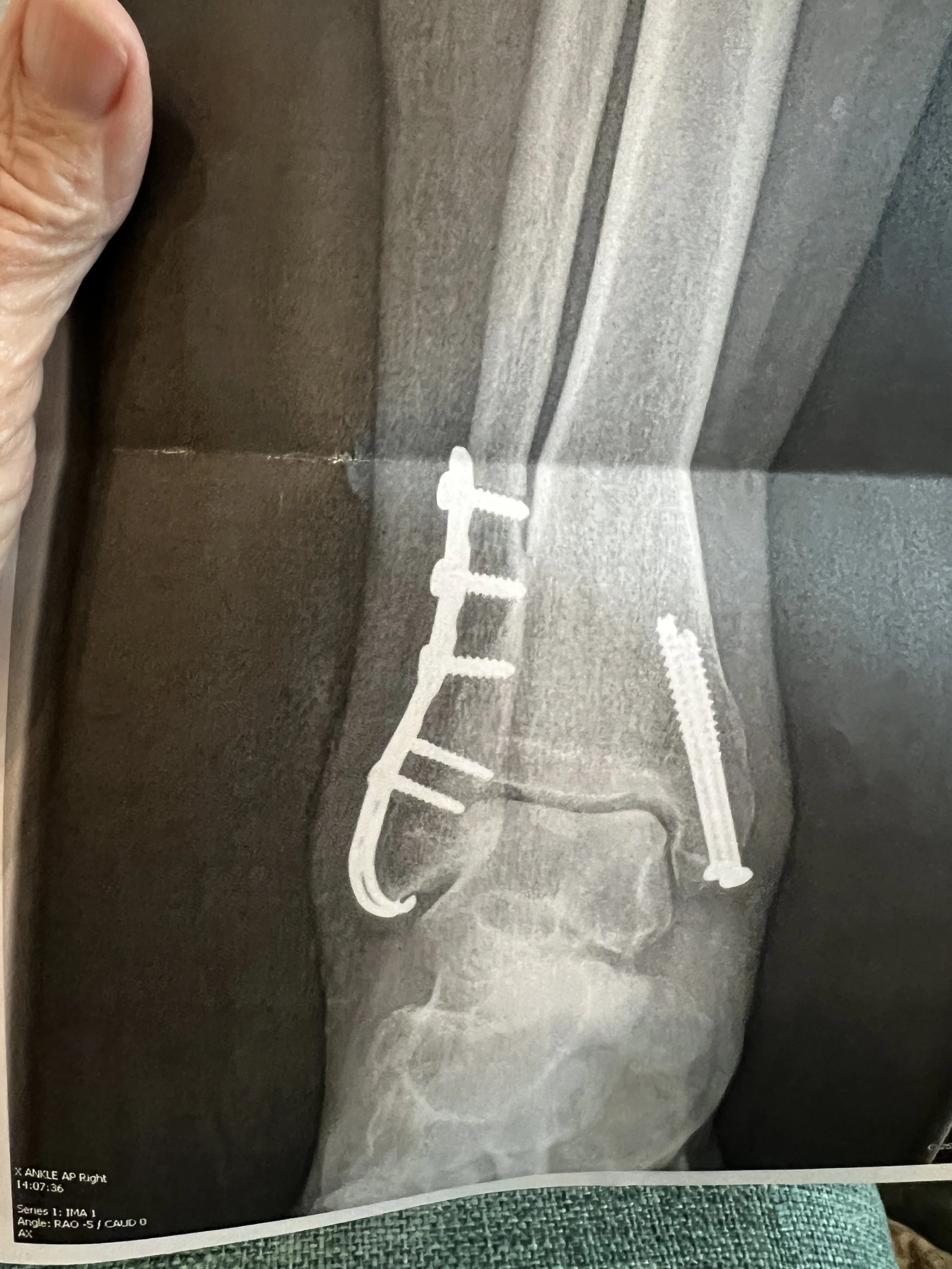Hardware Removal After Ankle Surgery: What to Know (and What to Expect)
Medical disclaimer: This article is educational and not a substitute for professional medical advice. Always follow your surgeon’s instructions for your specific case.
How common is ankle hardware removal?
Hardware removal (taking out plates, screws, or a syndesmotic tightrope after the bone has healed) is one of the most frequently performed orthopedic procedures. Rates vary widely by country, surgeon preference, implant type, and patient symptoms:
Finland (national registry, 1997–2016): Among 68,865 ankle fractures treated with ORIF, 27% later had hardware removed; the population incidence fell from 31 to 13 per 100,000 person-years over the study period. PubMed+2Taylor & Francis Online+2
Germany (all fracture types): In 2018, 176,257 hardware removal surgeries were performed nationwide; authors note broadly similar volumes in the U.S. and estimate ~180 procedures per 100,000 person-years in Western countries. PubMed Central
Across studies (foot & ankle focus): Published removal rates after ankle fixation range roughly 10% to 80%, reflecting different practices (routine removal vs. symptom-driven). acfas.org+1
Complications context (U.S. early-career surgeons): Overall complication rate after hardware removal about 9.6% (most are minor). PubMed
Takeaway: In the U.S., removal is common but increasingly selective—more often done for symptoms than as a routine step, and trends in some countries show declining removal rates as implant designs and practices improve. PubMed Central
Why is hardware removed?
Typical indications include:
Pain or hardware prominence/irritation (rubbing in shoes, tendon irritation, cold-weather sensitivity). PubMed Central+1
Infection or concern for late infection. PubMed Central
Hardware issues (loosened, migrated, or broken implants) or nonunion. acfas.org
Allergy/metal sensitivity (uncommon, diagnosis of exclusion). PubMed Central
Outcomes are generally favorable when removal is done for clear symptoms: large series report >90% pain relief and high patient satisfaction. PubMed Central+1
What does the procedure involve?
Day surgery under general or regional anesthesia. Incisions are usually made over prior scars, implants are located, and plates/screws are removed. If a syndesmotic screw is removed, it’s often a small outpatient procedure. (Approach varies by implant and anatomy.) FootCareMD
Recovery & “layup” timeline (typical, may vary by surgeon)
Weight bearing & protection
Many protocols allow weight bearing as tolerated immediately in a boot; others suggest a short period of protected weight bearing or a walking boot for ~4 weeks—your plan will be individualized. Dr. Andrew Marsh+1
Wound care
Keep dressings clean/dry; stitches are usually removed at 10–14 days. Avoid soaking until the incision is healed. MyHealth Alberta
Swelling & discomfort
Expect several days to a few weeks of soreness and swelling; elevation and ice help. MyHealth Alberta
Activity & return to work
Light desk work often resumes in 1–2 weeks; more physical jobs may need 3–4+ weeks. Some NHS guidance quotes an average 3–4 week recovery if there are no complications. Royal Orthopaedic Hospital
Driving
Commonly once you’re off narcotics and can perform an emergency stop safely; if the right ankle was involved, this may be ~1–2+ weeks, depending on comfort and surgeon advice. Congress Medical
Rehab
Gentle ankle motion and circulation exercises typically start early to reduce stiffness; formal PT is case-by-case. austinstonemd.com
Risks you should know about
While most removals are straightforward, potential issues include wound problems, infection, nerve irritation, bleeding, incomplete removal, persistent pain, and—rarely—refracture. Reported complication rates vary (roughly 3–15% across series; ~9–10% in some U.S. cohorts). Your individual risk depends on health factors (e.g., diabetes, smoking), soft-tissue quality, and the extent of surgery. PubMed+1
U.S. vs. other countries—practice patterns in a nutshell
Symptom-driven in the U.S.: Removal is typically not routine; it’s considered when there’s pain, irritation, infection, or hardware problems. PubMed Central
Selective reductions internationally: Large registries (e.g., Finland) show declining removal rates and lower early (≤3 months) removals over time—likely reflecting changing protocols and implant advances. PubMed
High overall volumes in Europe: Germany reports >170k removals annually (all anatomic sites), underscoring how common the operation is in orthopedic practice. PubMed Central
Practical questions to ask your surgeon
Do my symptoms link to the hardware, and are there alternatives (e.g., shoe mods, padding, injections)? PubMed Central
What recovery plan will I follow (boot, crutches, weight bearing)? When can I drive and return to work/sport? FootCareMD+1
What’s my risk of wound problems or nerve irritation, and how can I minimize it (e.g., smoking cessation, glucose control)? PubMed
If removing a syndesmotic screw, do we expect immediate function gains or any short-term precautions? FootCareMD
Share your story
Have you had ankle hardware removed? What convinced you to do it, and how did your recovery go—days, weeks, and months out?
Share your tips in the comments. Your experience could help someone else navigate this choice.

